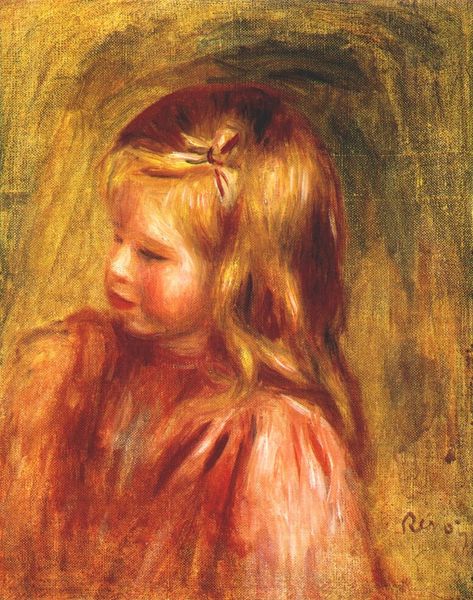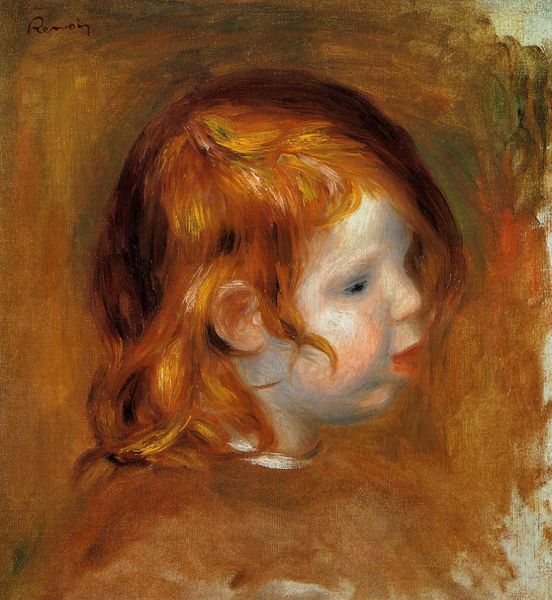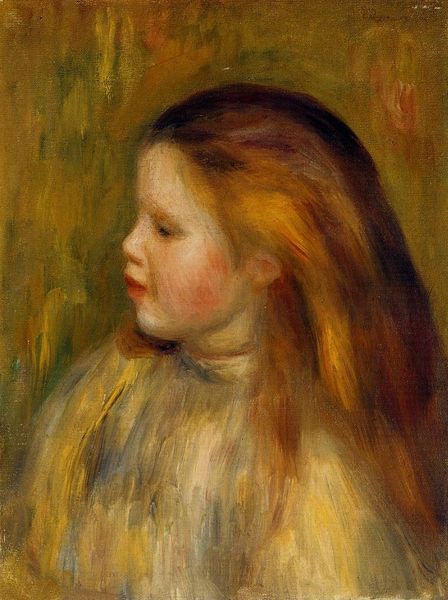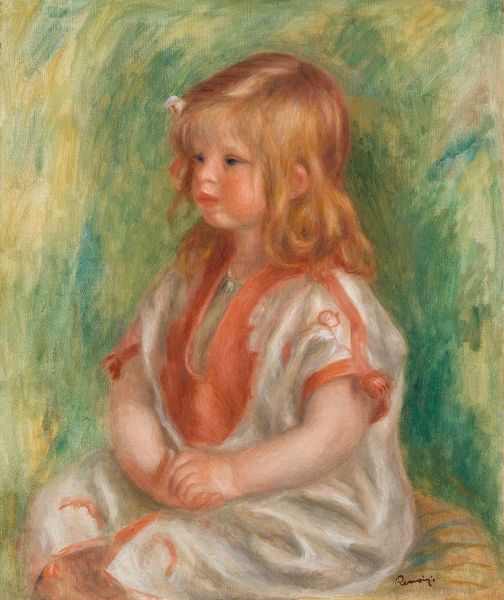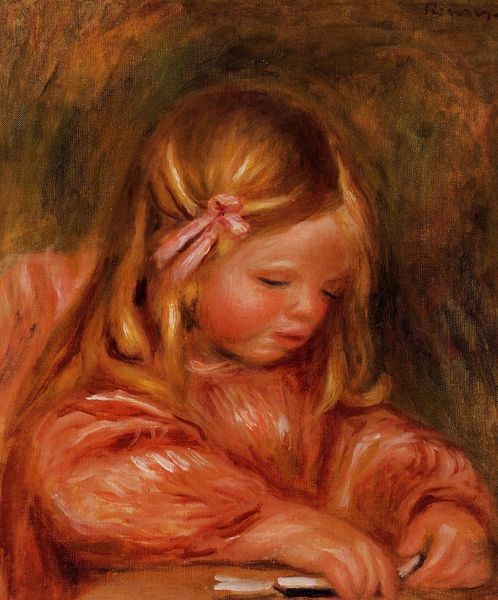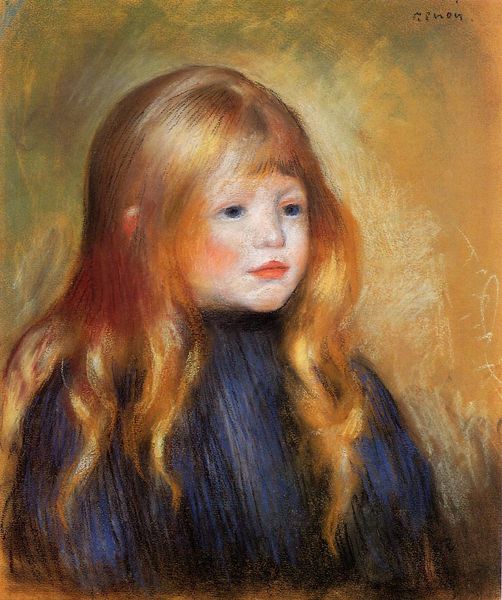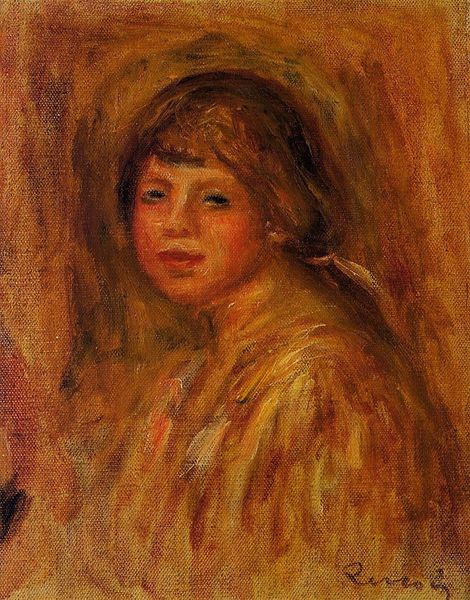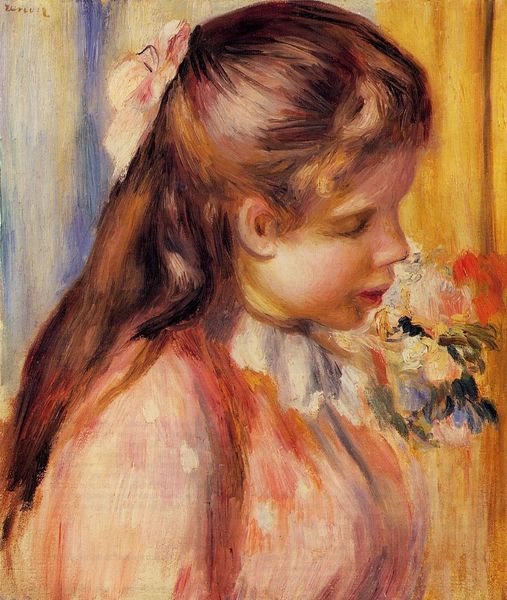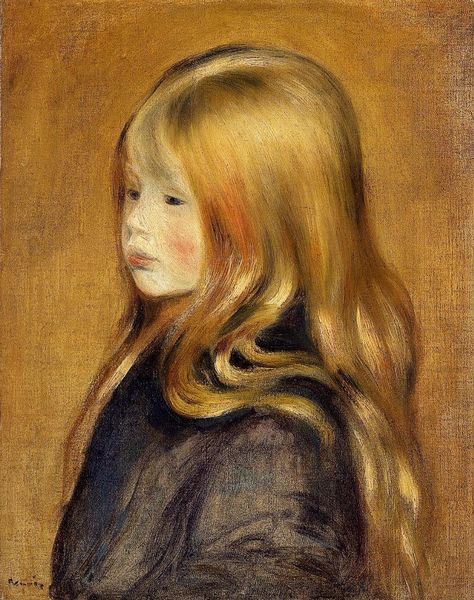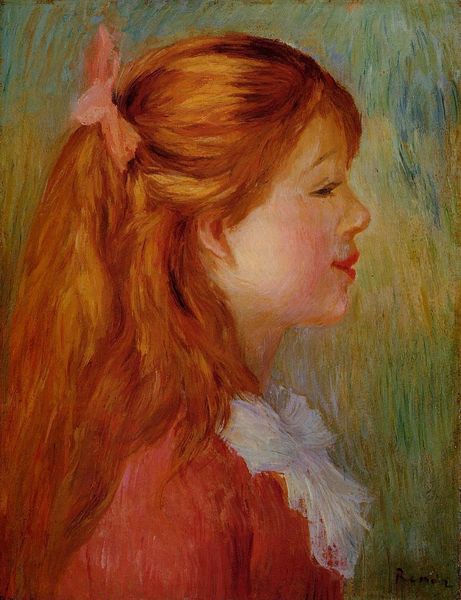
Copyright: Public domain
Editor: Here we have Renoir's "Portrait of Claude," painted in 1908. It's an oil painting, and what strikes me most is its incredible warmth – the colors almost seem to glow. What can you tell us about this piece? Curator: It's fascinating to consider this portrait within the context of Renoir's later years. He was grappling with increasing physical limitations due to rheumatoid arthritis, yet he continued to paint prolifically. What does this portrait tell us about his relationship to family, particularly the representation of childhood, given the constraints he faced? Editor: That's a really interesting point. It does feel very intimate, almost like a snapshot. Do you think that affects its historical significance? Curator: Absolutely. Impressionism, generally, sought to capture fleeting moments. Here, Renoir immortalizes a private moment, imbuing it with an almost idealized vision of innocence. In a period where photography was becoming increasingly prevalent, paintings like this reinforced the artist’s unique ability to interpret and romanticize reality. Do you think the soft, blurred edges contribute to that feeling? Editor: I think it definitely adds to the sense of a dreamlike state, separating it from a more literal depiction. Curator: Exactly. Renoir uses light and color not just to depict, but to evoke. Consider how portraits, even within the domestic sphere, were still performative. Whose gaze is prioritized, Renoir's as a father or as an artist marketing an idea of beauty? Editor: That is thought-provoking. It really opens up new perspectives about Renoir and the way he chose to represent his world. Curator: Indeed. Art always speaks volumes about its context, its creator, and the values that underpin its creation.
Comments
No comments
Be the first to comment and join the conversation on the ultimate creative platform.
